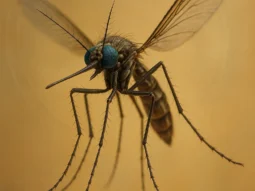
Re-infestations happen when the initial treatment is incomplete, leaving some pests behind. Termite colonies can be missed, and ineffective chemical barriers allow pests to return. Poor moisture control and structural vulnerabilities create inviting environments. Improper wood storage and neighboring infestations also contribute. Termites have evolved adaptations to thrive, so regular inspections are essential to detect activity early. You can prevent re-infestations by being thorough, sealing entry points, keeping vegetation trimmed, and collaborating with neighbors. Partnering with an experienced pest control professional is key. Understanding the factors behind re-infestations empowers you to take targeted action and maintain a pest-free home.
Incomplete Initial Treatment
One of the most common reasons for bed bug re-infestations is an incomplete initial treatment. If you don't eliminate all the bed bugs and their eggs during the first treatment, the infestation will quickly rebound.
It's vital to be thorough and meticulous when treating every potential hiding spot, including cracks, crevices, and hard-to-reach areas. Don't forget to inspect and treat items like furniture, luggage, and clothing that could harbor bed bugs.
Using the right products and application methods is also essential for a successful initial treatment. You should select EPA-registered insecticides specifically labeled for bed bug control and follow the instructions carefully. Applying insufficient amounts or using the wrong products can lead to a resurgence of the infestation.
To confirm a complete initial treatment, consider hiring a professional pest control company with experience in bed bug eradication. They've the knowledge, tools, and products to effectively eliminate bed bugs in one go. Remember, cutting corners during the initial treatment will only lead to frustration and additional costs down the road when the bed bugs inevitably come back.
Missed Termite Colonies
Failing to locate and treat all termite colonies during the initial treatment can also lead to a frustrating and costly re-infestation. Termites often establish multiple colonies around a property, and if even one colony is missed, it can quickly repopulate and cause significant damage.
To prevent this, you must conduct a thorough inspection of your property, including hard-to-reach areas like crawl spaces, attics, and behind walls. Use a moisture meter to detect high humidity levels that attract termites, and look for signs of infestation like mud tubes, discarded wings, and frass.
If you suspect multiple colonies, consider using termite detection dogs or infrared cameras to pinpoint their locations. Once found, treat each colony directly with termiticides or baits, ensuring complete elimination.
Ineffective Chemical Barriers
When it comes to ineffective chemical barriers, there are two main culprits: improper application and low-quality products.
If you don't apply the chemicals correctly, following the manufacturer's instructions to the letter, gaps in coverage can allow termites to breach the barrier.
Additionally, using inferior, watered-down, or expired chemicals won't provide the necessary level of protection to keep termites at bay.
Improper Application
Improper application of pesticides leads to ineffective chemical barriers that allow pests to re-infest your home.
When you don't follow the instructions on the product label, you risk applying too little or too much of the pesticide. Insufficient coverage leaves gaps in the barrier, while excessive application can cause the chemical to break down faster. Both scenarios result in a weakened defense against pests.
To ensure proper application, always read and follow the manufacturer's guidelines. Pay attention to the recommended dosage, mixing instructions, and application methods. Use the appropriate equipment, such as sprayers or dusters, to distribute the pesticide evenly and thoroughly.
Don't cut corners by skipping hard-to-reach areas or applying the product only in visible locations. Pests can hide in the tiniest cracks and crevices, so it's crucial to treat every potential entry point. Remember to reapply the pesticide as directed to maintain a strong, long-lasting barrier.
Low-Quality Products
Low-quality, ineffective pesticides create weak chemical barriers that crumble under pest pressure. When you choose cut-rate products to save money, you're setting yourself up for re-infestation headaches. Pests quickly penetrate subpar barriers, rendering treatments pointless.
Stick with professional-grade pesticides containing proven active ingredients at peak concentrations. These form potent, resilient chemical barriers that repel and eliminate pests. Don't squander time and resources on inferior products that can't withstand bug invasions.
Avoid generic brands or off-brand formulas. They often contain fillers, impurities, and lower percentages of active ingredients. This dilutes their effectiveness, letting pests break through.
For a rock-solid pest control foundation, select top-tier, commercial-grade products. Pair these with meticulous application techniques for a one-two punch against re-infestations. Choose quality over economy. In the long run, you'll spend less by investing in superior products that work right the first time.
Don't give pests an easy entryway. Opt for high-caliber chemical weapons to construct an impenetrable fortress around your home or business. Deny bugs a foothold by selecting pesticides that pack a powerful, lasting punch.
Poor Moisture Control
Failing to control moisture levels in your home creates an inviting environment for pests to thrive. Many insects, such as cockroaches, silverfish, and termites, are attracted to damp areas. They require moisture to survive and reproduce. If you don't address humidity issues, you're inadvertently rolling out the welcome mat for these unwanted guests.
To prevent re-infestations, you must identify and eliminate sources of excess moisture. Check for leaky pipes, faulty appliances, and poor ventilation in bathrooms and kitchens. Use a dehumidifier to maintain relative humidity below 50%. Repair any water damage promptly and thoroughly dry affected areas.
Pay attention to your home's exterior, too. Confirm proper drainage away from the foundation, fix leaky gutters, and seal cracks in the walls. Trim vegetation and remove organic debris near the house to reduce moisture retention.
Structural Vulnerabilities
Structural vulnerabilities in your home can provide easy access for pests to enter and re-infest.
Inspect your property for potential entry points like cracks, gaps, or holes in foundations, walls, windows, and doors.
Also, be aware that certain building materials are more pest-friendly than others, so consider replacing or sealing wood, insulation, or other substrates that may attract and harbor persistent pest populations.
Entry Points
Even the smallest cracks, gaps, and holes in your home's exterior can provide easy access for pests to enter and re-infest.
Inspect your foundation, walls, roof, and any areas where utilities enter for potential entry points. Mice can squeeze through openings as small as a dime, while insects like ants and cockroaches can crawl through tiny crevices.
Seal any cracks or holes you find with caulk, steel wool, or another appropriate material. Check window and door frames for gaps, and verify that weatherstripping is in good condition.
Don't forget to examine less obvious areas, such as vents, chimneys, and the spaces around plumbing and electrical penetrations.
Regularly maintaining your home's exterior is vital in preventing re-infestations. Keep gutters clean and in good repair to avoid water damage that can create new entry points.
Trim back trees and shrubs that touch your home, as these can serve as bridges for pests.
Pest-Friendly Materials
Certain building materials and structural vulnerabilities in your home can inadvertently attract pests and enable re-infestations.
Wood, for instance, is a favorite of termites and carpenter ants. They'll exploit any wood that's moist or decaying to build nests and expand colonies. Rodents love gnawing on electrical wires, which can spark fires.
Gaps around pipes and wires traveling through walls create highways for critters to move around your home undetected.
Cracks in foundations, loose siding, missing roof shingles, and deteriorating door sweeps all provide easy access for pests seeking shelter. Overgrown vegetation touching your home's exterior acts as a bridge for bugs and rodents to come inside.
Once in, they'll target insulation as nesting material. Cardboard boxes and stacks of papers are also enticing.
To fortify your home, seal cracks with caulk, replace damaged building materials promptly, keep vegetation trimmed back, and store items in solid plastic bins.
Denying pests hospitable conditions is key to preventing re-infestations. Partner with a pest control professional to identify and remedy structural vulnerabilities.
They'll help make your home an impenetrable fortress against persistent pests.
Landscaping Issues
Many landscaping issues around your home can attract bed bugs and lead to re-infestations.
Overgrown vegetation, like shrubs and bushes pressed against your home's exterior, gives bed bugs easy access inside. They'll hitch a ride on the branches touching your walls or windows. Keep plants trimmed back at least 6 inches from your foundation.
Mulch retains moisture that bed bugs need to survive. If you use it near your foundation, you're inviting them to set up camp. Pull mulch back at least 12 inches to create a dry barrier they won't cross.
Piles of leaf litter and yard waste are bed bug magnets. They'll hide in the dark, moist crevices until they find a way indoors. Bag up yard debris promptly and keep it away from your exterior walls.
Improper Wood Storage
Improperly stored firewood can attract numerous pests that may migrate into your home, causing a re-infestation.
Always keep your firewood dry by storing it off the ground and covering it with a tarp.
It's essential to store wood piles away from your house, ideally at least 20 feet from any structure, to minimize the risk of pests finding their way inside.
Firewood Attracts Pests
Storing firewood too close to your home's exterior invites wood-boring pests inside. Termites, carpenter ants, and powder post beetles are attracted to the cellulose in wood. When you stack firewood against your house or on the ground nearby, you're providing these pests with a direct path to your home's wooden elements.
They'll tunnel through the firewood and eventually make their way into your walls, floors, and foundation.
To prevent this, store firewood at least 20 feet away from your house. Use a sturdy metal rack to keep the wood off the ground and away from moisture.
Cover the top of the stack with a tarp to protect it from rain and snow, but leave the sides open for air circulation. Regularly inspect the firewood for signs of pest activity, such as sawdust, exit holes, or discarded wings.
Burn older wood first and avoid storing more than you'll use in a season. By properly storing your firewood, you'll reduce the risk of attracting wood-boring pests and prevent them from re-infesting your home after treatment.
Keep Wood Dry
If you don't keep your wood dry, it creates an inviting environment for moisture-loving pests like termites and carpenter ants. Wood with high moisture content is more susceptible to pest infestations.
When storing firewood, use a waterproof cover to shield it from rain and snow. Elevate the wood off the ground using a raised platform or pallets to prevent moisture from seeping in from below.
Proper ventilation is essential to keep your wood dry. Stack the logs in a crisscross pattern with space between each piece to allow air circulation. Avoid stacking wood tightly, as this traps moisture and promotes pest activity.
Regularly check your firewood for signs of moisture, such as dampness or mold growth. If you notice any wet or decaying pieces, remove them promptly to prevent the spread of moisture and pests to the rest of the stack.
Store Away From House
Don't make the mistake of stacking firewood right next to your house. This gives termites and other wood-boring pests easy access to your home's structure.
Aim to store wood piles at least 20 feet away from your house, shed, or garage. The further the better.
Also verify that there's no direct wood-to-ground contact. Raise the wood pile a few inches off the ground using concrete blocks, bricks, or a rack.
This prevents moisture wicking up and keeps pests from easily crawling in.
Avoid storing wood against your fence as well. Termites can use fences and wood piles as 'bridges' to reach your home undetected.
Regularly inspect your yard to confirm no wood debris or dead stumps are creating this bridge effect.
Neighboring Infestations
Many infestations recur because pests migrate from neighboring homes, apartments, or hotel rooms that have an existing infestation. If you live in close proximity to others, their pest problems can quickly become yours. Insects and rodents easily travel through walls, along pipes and wires, and across shared spaces to invade adjacent units.
To prevent re-infestation from neighboring areas, work with your neighbors to address pest issues collaboratively. Notify your landlord, property manager, or HOA if you suspect a nearby infestation. They're responsible for ensuring all units are pest-free and should take swift action to treat affected areas.
Seal potential entry points like cracks, gaps, and holes around your home's perimeter. Install door sweeps and weather-stripping to block pests from crawling underneath doors. If you're in an apartment or condo, don't forget to secure interior access points like light sockets, plumbing penetrations, and baseboards.
Maintaining a clean, clutter-free home also deters pests from taking up residence in your space. By making your home less attractive to insects and rodents, you'll reduce the likelihood of an infestation spreading from adjacent properties.
Termite Species Adaptations
Termites have evolved remarkable adaptations that enable them to thrive in diverse environments and efficiently break down cellulose. Their specialized gut microbes allow them to extract nutrients from wood, while their social structure and division of labor contribute to their success. Different termite species have adapted to various climate conditions, moisture levels, and food sources, making them resilient pests.
| Adaptation | Benefit |
|---|---|
| Specialized gut microbes | Efficient cellulose digestion |
| Social structure & division of labor | Effective resource utilization & colony growth |
| Moisture regulation | Survival in diverse environments |
| Pheromone communication | Coordination of colony activities |
You must understand these adaptations to effectively prevent and control re-infestations. Subterranean termites, for example, require constant moisture and build underground tunnels to access food sources. Drywood termites, on the other hand, can survive in dry conditions and often establish colonies within wooden structures. By identifying the termite species present and their specific adaptations, you can tailor your prevention and treatment strategies accordingly. Regular inspections, moisture control, and targeted treatments are essential in stopping re-infestations and protecting your property from these persistent pests.
Lack of Regular Inspections
Failure to conduct regular termite inspections is a common mistake that can lead to re-infestations, as early signs of termite activity often go unnoticed.
You should schedule professional inspections at least once a year, even if you don't suspect an active infestation. Between these annual inspections, conduct your own checks every few months.
Look for warning signs like discarded wings, mud tubes, wood damage, and frass (termite droppings). Pay close attention to moisture-prone areas, foundation walls, crawl spaces, and wood-to-ground contact points.
Use a flashlight and probing tool to examine hard-to-reach spots.
If you spot potential termite activity, contact a pest control professional immediately for a thorough inspection and treatment plan. Don't wait until the next scheduled inspection, as prompt action is vital to prevent extensive damage and costly repairs.
We hope you enjoy these informational articles. If you'd like to learn more about our eco-friendly pest control services, call (844) 955-2447.
Read More
Your Path to a Pest-Free Home or Business
Romex Pest Control
We are committed to protecting you, your children, and your pets with our eco-friendly, child-friendly, and pet-friendly guaranteed pest control solutions.
Romex Pest Control is fully insured and licensed in Texas, Oklahoma, Louisiana, and Mississippi.
Service Areas:
Hours
M-F 8 am–5 pm
Sat 8 am–2 pm
Sun Closed
Established 2016 © Copyright 2025 Romex Pest Control










